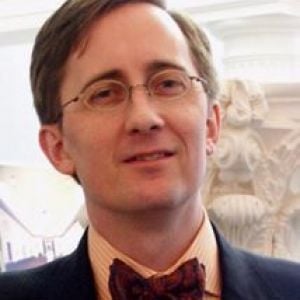

Duncan Stroik’s architectural practice grows out of a commitment to the principles of classical architecture and urbanism. For over a decade he has focused on the design of ecclesiastical, civic, residential and collegiate buildings, which combine a passion for durability, function and beauty. Stroik’s education and career have closely paralleled the evolution of the international classical movement, and over the past decade his work has been instrumental in the new renaissance of sacred architecture.
Stroik received his architectural education from the University of Virginia and Yale University. Following graduation, he served as a project designer for the architect Allan Greenberg, with whom he designed a number of prestigious civic, institutional, collegiate and residential projects. In 1990 Stroik was invited to help form and implement a new curriculum in classical architecture at the University of Notre Dame, later hailed by the New York times as the “Athens of the new movement.”
Stroik’s design work and essays on architecture have been featured in the New York Times, the Wall Street Journal, the New Republic, Crisis, Inside the Vatican, Our Sunday Visitor and Catholic Dossier. Stroik and his work have also been featured on Bob Vila, PBS and EWTN television. Projects by Stroik have been exhibited in Rome, Milan, Chicago, Bologna, Istanbul and Yale University. He lectures widely on the principles of traditional architecture and Catholic Church design.
Stroik’s involvement in the new renaissance of sacred architecture has led to the formation of the Society for Catholic Liturgy and the journal Sacred Architecture, of which he is editor. Stroik is considered to be one of the foremost educators and practitioners in Catholic architecture. He has designed projects for houses in New England, Chicago, and Ireland; churches in California, Nebraska, Arizona, and Kentucky, as well as other civic buildings. He is presently engaged in ecclesiastical projects for Wisconsin, Texas, Indiana, North Carolina, Missouri, and California, along with a commercial building in Kentucky and a school in Indiana. It is Stroik’s belief that a revival of sacred architecture is central to any true renaissance of architecture and civil society.

